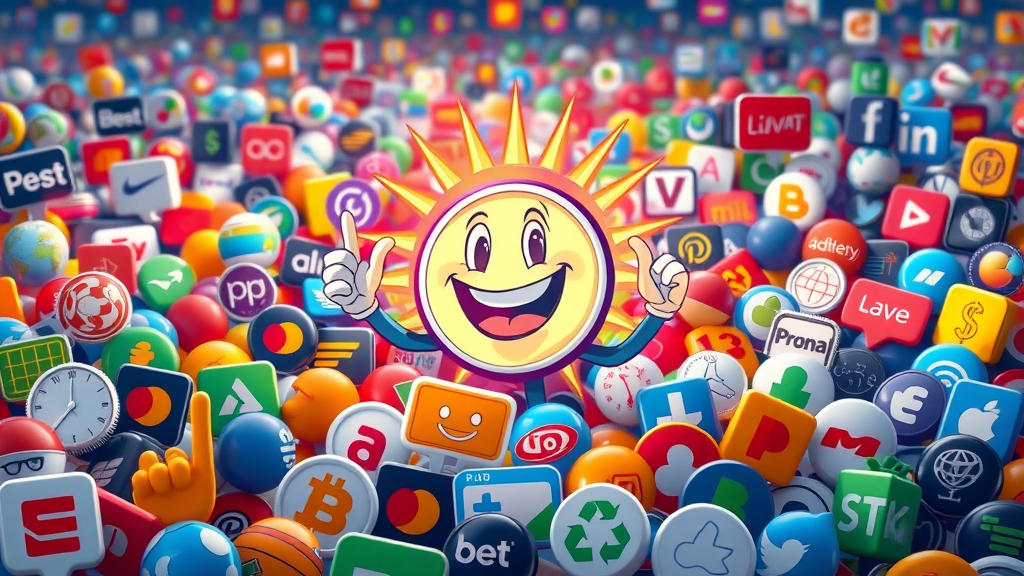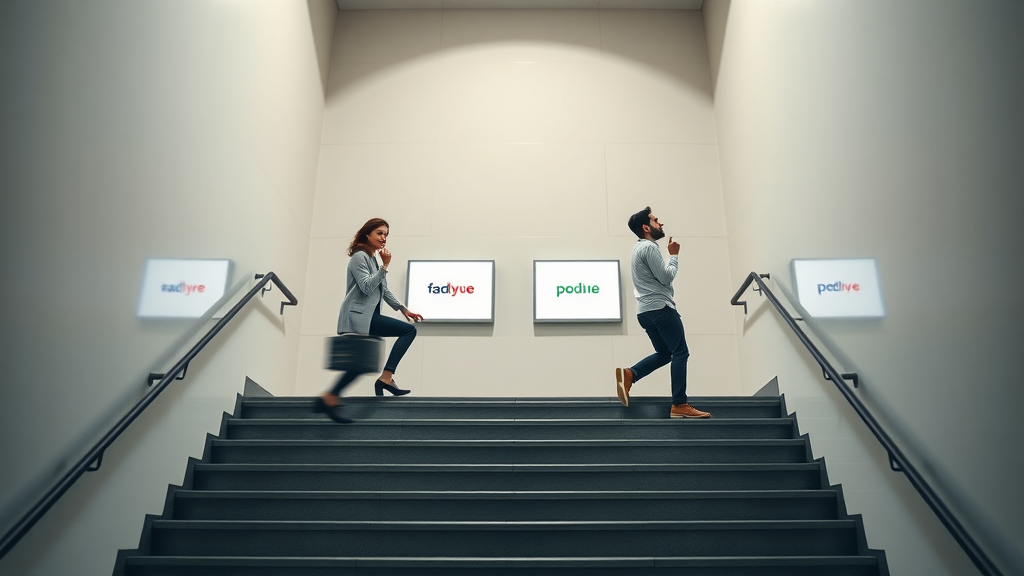Ever heard this before? “Did you know that 89% of consumers stay loyal to brands they recognize, even when presented with new alternatives?” That single statistic proves just how much brand awareness can make – or break – your success today. If your business is virtually invisible among the competition, here’s the fix you need right now. In this comprehensive guide, you’ll discover why brand awareness is critical, actionable ways to improve your strategy, and exactly how to measure success. Whether you’re launching a new business or revitalizing an old favorite, we’ll show you how to take your brand from unseen to unforgettable.
Opening Insights: Why Brand Awareness Is Vital for Success
If you want customers to choose your product or service over the competition, strong brand awareness is non-negotiable. In a marketplace crowded with options, being top of mind is what separates industry leaders from brands lost in the shuffle. Awareness lays the foundation for positive brand perception, influences purchase decision, and increases overall brand equity. Across industries, brands with high visibility enjoy everything from lower customer acquisition costs to stronger loyalty and repeat business.
Your target audience is bombarded with advertising every day. If they aren't aware of your brand, your products and services might as well not exist. Cultivating recognition and recall ensures you’re not just “another choice,” but the first choice. This guide offers strategies to build brand awareness that go beyond just running a media post—we’ll help you implement tactics proven to deliver mind awareness and create lasting business growth.

“Did you know that 89% of consumers stay loyal to brands they recognize, even when presented with new alternatives?”
What You’ll Learn About Brand Awareness
- Understanding the fundamentals of brand awareness
- Key differences between brand recognition, brand recall, and aided brand awareness
- Proven strategies to build brand awareness in saturated markets
- How social media and digital marketing shape brand awareness
- Tools and KPIs to measure brand awareness
- Best practices for strong brand image and brand equity
- Case studies and actionable tips to increase brand awareness
Defining Brand Awareness: What Do You Mean by Brand Awareness?
Brand awareness is the extent to which consumers are familiar with your brand’s identity—including its name, logo, products, or services. Think of it as the first critical step before moving a customer from a stranger to a loyal fan. If people aren’t aware of your brand, they can’t consider you in their purchasing decision. Effective brand awareness means your brand surfaces quickly in the minds of your target audience and outshines competitors at decision time. It’s more than just recognition; it’s about being the top-of-mind choice in your industry.
Brands invest heavily in awareness because it opens the doors for every next step: building trust, developing a strong brand image, and eventually producing meaningful, lasting business. Whether measured through surveys, social listening, or digital analytics, brand awareness is often the important metric that predicts market growth, consumer loyalty, and the overall success of a marketing campaign. For companies just starting out or seeking to reposition themselves, nailing down your awareness strategy is the most essential building block.

Brand Awareness Versus Brand Recognition and Brand Recall
While often used interchangeably, brand awareness, recognition, and recall are distinct metrics you need to understand. Brand recognition refers to consumers' ability to identify your brand when presented with a visual cue—like a logo or packaging. Think of it as “I know I’ve seen that before.” Brand recall is unaided memory: Can someone think of your brand without a prompt when considering a product category? True brand awareness combines both—making your brand easy to spot, remember, and ultimately choose over similar products and services.
Aided brand awareness means consumers recognize your brand name or logo when shown a list (think: a multiple-choice quiz), while unaided awareness means they recall your brand on their own. Companies with strong brand recall enjoy premium shelf space in the minds of consumers, leading to higher purchase decision rates and organic referrals. Measuring all three—and understanding how they move together—is essential as you work to build, measure, and refine awareness campaigns that truly elevate your brand.
Why Brand Awareness Matters for Your Target Audience
Your target audience makes decisions quickly, and brand awareness is often the shortcut your potential customers rely on. When faced with a purchasing decision, familiar brands have a head start because people naturally gravitate towards what they know and trust. This familiarity can lower barriers, increase campaign effectiveness, and create a sense of community around your products or services.
Consider how mind awareness shapes everything from impulse buys to long-term loyalty. A brand that routinely comes to mind is more likely to be considered, tried, and recommended. This “top-of-mind” effect means your marketing strategies and investment pay back much faster compared to fighting for attention with every single advertisement. As you continually reinforce your brand in the minds of your audience, you pave the path to becoming their first—and only—choice.
| Term | Definition | How It’s Measured | Business Value |
|---|---|---|---|
| Brand Awareness | Broad understanding and familiarity with your brand, name, logo, and offerings. | Unaided & aided recall, surveys, analytics |
|
| Brand Recognition | Ability to identify your brand among visual or verbal cues. | Logo, packaging tests, aided surveys |
|
| Brand Recall | Remembering your brand name without any prompts. | Unaided survey questions, recall exercises |
|
As you refine your approach to brand awareness, it's important to remember that social media engagement plays a pivotal role in amplifying your message and fostering authentic connections. For practical advice on boosting your brand’s presence across key platforms, explore these proven strategies to improve social media engagement and drive real results in your awareness campaigns in this guide to fixing social media engagement.
The Four Levels of Brand Awareness Explained
The journey from total anonymity to top-of-mind status involves four distinct stages of brand awareness. These levels, often visualized as steps in a ladder, reflect how your target audience moves from never having heard of you to actively preferring your brand above all others. Recognizing these levels helps plan effective campaigns and measure brand awareness progress along the path to becoming a true market leader.
Building brand awareness requires strategic, consistent effort. The more you climb, the less competition you face—as very few brands reach the highest tier of mind awareness. Let’s break down each stage so you can accurately assess where you stand and make plans for upward movement.

From No Awareness to Top-of-Mind Awareness
Understanding the four levels of brand awareness is vital for crafting the right marketing strategy. Here’s what each step looks like:
- No Awareness — Your audience doesn’t know your brand exists. It’s your job to introduce yourself and spark initial recognition.
- Brand Recognition (Aided Awareness) — People recognize your logo, name, or product when prompted. This is critical for shelf presence and trust.
- Brand Recall (Unaided Awareness) — Your audience can name your brand without help. This is where you start generating preference and repeat business.
- Top-of-Mind Awareness (Mind Awareness) — Your brand is the first that comes to mind in your category. You become synonymous with the product itself (think: “Band-Aid” rather than “adhesive bandage”).
How to Move Through the Four Levels of Brand Awareness
To move from obscurity to top-of-mind status, you need a layered approach. Start by saturating your target audience’s preferred media channels with your brand’s visuals and messaging. Leverage social media and both digital and traditional campaigns to multiply touchpoints. As you gain brand recognition, shift focus to deeper engagement—share stories, activate community, and incentivize participation. For higher brand recall, integrate your brand into daily conversations and trending topics.
Remember, repetition and consistency are your secret weapons. Keep your brand’s visual language and voice steady across all interactions. Finally, to reach top-of-mind awareness, offer unforgettable experiences, build strong emotional connections, and keep innovating so your audience thinks of your brand before anyone else.
"Brand equity starts with awareness – it’s the reason a potential customer considers you before the competition."
The Seven Brand Elements: Building a Strong Brand
Every iconic brand you know is the result of deliberate and strategic work on these seven essential elements. Mastering each not only helps build brand awareness, but also cements positive brand image and lasting loyalty for years to come.

- Brand Identity
- Brand Image
- Brand Culture
- Brand Personality
- Brand Communication
- Brand Equity
- Brand Loyalty
How Each Brand Element Impacts Brand Awareness
Each of these seven brand elements plays a unique role in shaping brand awareness. Brand identity defines all the visual and verbal symbols that make your brand instantly recognizable—from logos to tone of voice. Brand image is the reputation that forms in the minds of consumers. A positive brand image supercharges awareness by making each encounter memorable rather than forgettable.
Brand culture sets the internal DNA and external values your brand stands for. Brand personality humanizes your business, giving it traits people can relate to. Brand communication keeps your story front-and-center in conversations. When these are aligned, you move towards brand equity, or the tangible and intangible value consumers place on your company. High brand loyalty is the result: people who are aware, engaged, and excited to share your story with others.
What Is Considered Good Brand Awareness?
“Good” brand awareness varies by industry, market size, and competitor saturation, but a strong baseline is always more than simple recognition. Benchmark your awareness against established KPI targets—both for aided and unaided recall. High awareness means being included in every purchase decision within your category without massive direct ad spend; it’s a sign you’ve become a trusted staple, not just an option.
Brands with an aided brand awareness rate of 60% or greater and an unaided recall of over 30% are seen as category leaders. Prioritize consistency, repetition, and high-value engagement to exceed these standards. Always remember: real brand strength comes when your audience thinks of you first, not just when shown a logo.
Benchmarks: Industry Standards for Strong Brand Awareness
Different markets demand different standards, but successful brands consistently outperform their peers in both aided and unaided metrics. Consider how top brands sustain recall above 50%—and how others try to catch up.
| Industry | Aided Awareness (%) | Unaided Recall (%) | Top-of-Mind (%) |
|---|---|---|---|
| Consumer Electronics | 80 | 42 | 30 |
| Automotive | 78 | 38 | 27 |
| Retail | 70 | 33 | 20 |
| Finance | 68 | 29 | 18 |

Measuring Brand Awareness: KPIs and Tools
To truly measure brand awareness, you need reliable tools and transparent metrics. Surveys and social listening offer both qualitative and quantitative insights. Direct web traffic, search engine rankings, and Google Analytics are key for digital brands, providing data on how many users land directly on your site. Tools such as SEMrush, BrandWatch, or Sprout Social allow you to monitor trends, measure sentiment, and benchmark growth in real time.
KPIs to track include unaided awareness percentage, share of search, branded keyword impressions, and social engagement rate. Use a blend of surveys for recall and recognition, and analytics dashboards for traffic and conversation trends. By analyzing these numbers regularly, businesses can fine-tune their campaigns and consistently increase brand awareness over time.
- Surveys and Social Listening
- Direct and Indirect Traffic Analytics
- Aided vs Unaided Brand Awareness Tracking
Building Brand Awareness from the Ground Up
Whether you’re launching a startup or refreshing an established name, building brand awareness is a step-by-step process. Start by gaining laser-sharp clarity on your target audience, then create a brand identity and message that stands out and sticks. By layering in the right marketing strategies, you’ll move your brand steadily from unknown to unforgettable.
Laying the Foundation: Identifying Your Target Audience
Every successful awareness campaign begins by understanding exactly who you’re trying to reach. Conduct market research, build detailed buyer personas, and dig into the motivations, preferences, and habits of your ideal clients. What matters most to them? Where do they spend their time? Which pain points does your product or service address?
Knowing your target audience ensures that each marketing campaign and every social media post resonates, rather than getting lost in the noise. Use direct feedback, focus groups, and search engine data to validate what will make your brand instantly appealing and memorable to the people you care about most.

Crafting Unique Brand Identity and Messaging
Your brand identity is your business's calling card—the immediate signal to consumers about what sets you apart. Invest in a distinctive logo, clear visual style, and a voice that speaks directly to your audience’s aspirations. Consistent, compelling messaging builds trust and brand image over time.
Align your brand narrative with what your audience values. Whether you’re upholding tradition or positioning as a disruptor, clarity and continuity in messaging are essential to move from brand recognition to recall and, eventually, brand preference and loyalty.
The Role of Social Media in Building Brand Awareness
No modern awareness strategy is complete without a robust social media presence. Social platforms introduce your brand to vast, targeted audiences quickly, fostering both recognition and direct engagement. A great social media plan showcases authenticity, amplifies key messages, and encourages user-generated content to establish credibility—making your brand easy to find and even easier to remember.

Choosing the Right Platforms for Brand Recognition
Not all social channels drive equal impact for every brand. Match your platform choice to your target audience’s preferences and online behaviors:
- Facebook: Great for community building and targeted paid reach.
- Instagram: Visual storytelling and influencer partnerships shine here.
- Twitter: Real-time dialogue and trending conversations drive recall.
- LinkedIn: Best for B2B and professional trust-building.
- TikTok: Rapid reach for creative, viral storytelling and youth engagement.
Consider lists of pros and cons for each as you build out your awareness campaigns, and don’t neglect emerging platforms or niche communities—sometimes the fastest path to market dominance comes from being an early adopter.
Social Listening and Engagement Strategies
Listening is just as important as talking. Social listening tools let you track, measure, and respond to online conversations about your brand, products, or services as they happen. Proactively engaging through comments, responding to feedback, and harnessing trending moments helps build brand awareness organically.
Smart engagement strategies include running creative challenges, sharing behind-the-scenes content, and collaborating with micro-influencers to multiply reach. Remember: the more you participate in authentic conversation, the more positive sentiment you build, making every media post a building block for long-term mind awareness.
Marketing Campaigns that Drive Brand Awareness
A standout marketing campaign can catapult your brand from obscurity to household name. The most effective campaigns balance creativity, relevance, and frequency—introducing your brand’s story while fostering trust and loyalty.
Successful brand awareness campaigns don’t rely solely on big budgets. Instead, winning formulas blend strategic messaging, clever partnerships, and shareable content—whether through digital or traditional means—for maximum exposure and recall.
Digital Campaigns: Content, Influencers, and Virality
Digital media levels the playing field, allowing both iconic and emerging brands to connect with audiences at scale. Content marketing, especially when paired with strategic influencer collaborations, packs a double punch for increasing reach and relatability. Make your brand memorable by producing content that educates, entertains, or solves real problems—then encourage audience sharing to boost virality.
Social media challenges, branded hashtags, and behind-the-scenes videos help you build momentum. Involving influencers who authentically align with your values amplifies trust and can propel rapid brand recognition. A viral social media post can give your campaign more traction than months of paid ads, so don’t be afraid to experiment with unconventional ideas.

Traditional Campaigns vs Digital: Which Builds Strong Brand Awareness?
Traditional campaigns—like TV, radio, billboards, or print—still drive strong brand awareness, especially in local or older demographics. Their broad reach cements name and logo recognition over time, but often lacks the engagement and precise targeting of digital formats.
Digital campaigns, on the other hand, allow brands to segment audiences, receive immediate feedback, and measure impact in real-time. While digital methods are cost-effective and scalable, the best approach uses both: reach audiences broadly with traditional, then funnel engagement and conversions online for deeper brand recall and lasting awareness.
| Campaign Type | Reach | Engagement | Cost Effectiveness | Measured ROI |
|---|---|---|---|---|
| Traditional | Wide | Low to Medium | Medium to High | Moderate |
| Digital | Medium to Wide | High | High | High |
| Hybrid | Wide | High | Medium | Very High |
How to Increase Brand Awareness: Actionable Tactics
- Strategic Partnerships
- Influencer Collaborations
- Community Engagement
- Consistent Visual Branding
- Repetition and Frequency

B2B vs B2C: Tailoring Tactics for Target Audience
B2B companies focus brand awareness strategies on building long-term trust, industry authority, and high-value partnerships. LinkedIn, thought leadership content, and targeted events are essential for establishing credibility. For B2C brands, emotional storytelling, visuals, and social media campaigns are the engines for rapid growth.
Tailor your channels and tactics to fit audience habits: where do they research, socialize, or make purchasing decisions? The more your outreach aligns with their expectations, the faster your brand recall and equity grow.
Brand Recall and Aided Brand Awareness: Driving Top-of-Mind Presence
Top-of-mind awareness represents the holy grail of branding—it means your customer thinks of you instantly, without any external prompt. Driving this status depends on how frequently and meaningfully you engage your audience. Aided brand awareness is important for getting your foot in the door, but aiming for unaided recall ensures your brand leads the conversation.
Regular, targeted exposure of your brand in the right context is vital. With enough repetition and distinctive messaging, you’ll find your company’s name popping up in purchase decisions, even in categories crowded by established players.

Encouraging Unaided Recall Through Content and Experience
Content is king when it comes to unaided recall. Structured storytelling, consistent visual and verbal themes, and ongoing engagement embed your brand deeper in the audience’s memory. Experiential marketing and personalized service offer memorable moments that customers recount—and recommend to others.
Harnessing the power of unique events, interactive campaigns, and even customer advocacy programs further cements your position in the mind of your target audience. The more memorable and positive your interactions, the more likely you are to achieve mind awareness that drives serious market share.
Brand Equity and Long-Term Growth
Long-term business growth is anchored in brand equity—the added value a recognized, trusted brand brings to every transaction and partnership. The greater your brand awareness, the easier it becomes to introduce new products, charge premium prices, and weather market challenges.
Brand equity grows with each successful campaign, referral, and loyal customer. By consistently tracking awareness and acting to improve, you build a virtuous cycle: stronger equity leads to stronger performance—now and for years to come.
How Brand Awareness Fuels Brand Equity
The correlation between awareness and equity is clear: the more your audience knows, trusts, and prefers your brand, the higher your perceived and real value in the marketplace. Monitor this relationship with regular brand health checks, and continuously seek ways to deepen audience engagement with innovative storytelling and loyalty programs.
| Awareness Level | Perceived Equity | Actual Market Share |
|---|---|---|
| No Awareness | Low | Minimal |
| Recognition | Moderate | Growing |
| Recall | High | Strong |
| Top-of-Mind | Very High | Market Leader |
Measuring Brand Awareness: Tools and Methods
The best brands never stop measuring and refining their awareness scores. Use a blend of surveys, analytics tools, and social listening to get a 360-degree view of your success. Track both direct (type-in traffic, recall surveys) and indirect signals (brand mentions, search rankings) to diagnose what’s working—and what’s not.
Continually adjusting strategy based on fresh data ensures continued growth in brand equity and a healthy return on every marketing dollar spent.
Social Listening, Surveys, and Analytics
Start with regular consumer surveys to obtain both aided and unaided recall data. Layer in tools like Google Analytics to identify branded versus non-branded keyword traffic. Social listening tools capture real-time conversations about your company across platforms, illuminating trends, strengths, and reputation risks.
Together, these tools give a comprehensive picture—revealing, for instance, how a new media post or campaign affects brand awareness over time, and which messaging anchors your brand in audience memory.

Popular Tools: Google Trends, SEMrush, BrandWatch, Sprout Social
For digital marketers and brand managers, a toolkit is essential. Google Trends highlights search interest in your brand, while SEMrush and BrandWatch provide sophisticated insights into brand performance relative to the competition. Sprout Social delivers advanced social analytics and listening features for tracking sentiment, mentions, and engagement patterns—a must for rapidly evolving digital and social media landscapes.
Common Pitfalls in Building Brand Awareness
- Ignoring Target Audience Preferences
- Inconsistent Branding
- Poor Social Media Presence
- Not Measuring Results
Brands often stumble by neglecting their audience’s interests or letting branding drift. Failing to sustain a solid social media presence or regularly measure brand awareness with real numbers leads to wasted investment and missed growth opportunities.
Case Studies: Successful Brand Awareness Campaigns
- Nike’s “Just Do It”
- Apple’s Consistent Visual Branding
- Old Spice’s Viral Rebranding
- Local Business Spotlight – Regional Growth via Social Media
These campaigns exemplify how creative messaging, relentless consistency, and bold strategy can create legendary levels of awareness, turning brands into cultural icons and industry leaders.
People Also Ask: Brand Awareness Essentials
What do you mean by brand awareness?
Brand awareness means how familiar your target audience is with your brand, its products, or services. It’s not just about knowing the logo or name—but about being recognized, remembered, and chosen in your category. Brand awareness shapes consumer behavior and is a critical step before making a purchase decision or becoming loyal to a brand.
What are the 4 levels of brand awareness?
The four levels include: No Awareness, Brand Recognition (Aided Awareness), Brand Recall (Unaided Awareness), and Top-of-Mind Awareness (Mind Awareness). Each stage marks a deeper relationship with your brand, moving from unfamiliarity to being the first thought in the consumer’s mind when considering a purchase.
What are the 7 brand elements?
The seven elements are: Brand Identity, Brand Image, Brand Culture, Brand Personality, Brand Communication, Brand Equity, and Brand Loyalty. Each works together to build a powerful, memorable brand presence that drives awareness and loyalty for the long term.
What is considered good brand awareness?
Strong brand awareness means your brand is recognized and recalled not just when prompted (aided), but also without prompts (unaided). While targets vary by industry, high-performing brands maintain aided awareness rates above 60% and unaided recall above 30%, positioning themselves as category leaders and consistently winning first consideration in purchase decisions.
FAQs on Brand Awareness
-
How does brand awareness impact consumer behavior?
Brand awareness boosts credibility and trust, making consumers more likely to choose your product or service over competitors—even if alternatives are available. It directly influences each step of the purchasing decision, from research and evaluation to purchase and advocacy. -
What are low-cost strategies to increase brand awareness?
Content marketing, customer referrals, community involvement, and regular social media posts are effective, budget-friendly approaches. Focus on creative, shareable material that encourages audience participation and word-of-mouth. -
How often should brands measure their awareness levels?
Measurement should be ongoing—track monthly using digital analytics, and conduct in-depth surveys quarterly or with every major campaign to refine your strategy and maintain a healthy growth trajectory. -
What role does employee advocacy play in brand awareness?
Employees who share their experiences and promote the brand serve as powerful ambassadors, lending authenticity and reach to your campaigns. Strong internal buy-in amplifies external visibility and trust.
Key Takeaways for Building Brand Awareness
- Brand awareness is more than logo recognition; it is a holistic, ongoing process.
- Both digital and traditional methods play crucial roles in building and measuring brand awareness.
- Regularly track and analyze your brand awareness metrics to refine marketing strategies.
- Strong brand awareness leads to increased brand equity and long-term business growth.
Conclusion: Start Building Your Brand Awareness Today
With these strategies, tactics, and proven best practices, you have everything you need to elevate your brand from unknown to unforgettable. Begin today; measure, refine, and grow—then watch as your brand equity rises for lasting success.
If you’re ready to take your brand’s visibility to the next level, consider how your reputation shapes every interaction and perception in the marketplace. Building awareness is just the beginning—safeguarding and enhancing your brand’s reputation ensures long-term trust and loyalty. Discover advanced strategies for managing and elevating your brand’s standing by reading what most businesses overlook about brand reputation and why it truly matters. Unlock the next layer of brand success by mastering both awareness and reputation management.
Ready to Boost Your Brand Awareness? Need Help? Call Digital Media Marketing at 1-586-997-0001
For more in-depth strategies, tips, and real-world case studies, read The Ultimate Guide to Branding: Build, Grow, and Protect Your Brand.
 Add Row
Add Row  Add
Add 




Write A Comment